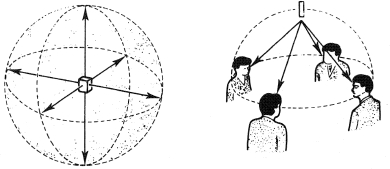Choosing Microphones
Effective sound pickup involves a great deal more than just being able to hear what is going on!
Microphone design
There are, in fact, several types of microphone, including dynamic (moving coil), condenser (electrostatic), electret, ribbon. Each has its particular merits and limitations. What is more important to most users is how they behave in use, Do they overload easily, and distort near loud sources? Are they easily damaged? is it the audio quality you want?
The form of microphone you use mainly depends on-the way you are going to use it. Some are intended to be hand held, others fit certain types of mounting, or are intended for particular jobs. For example, a PZM (pressure zone microphone) uses a plate-mounted electret capsule, and is generally attached to walls or tables, for group sound pickup.
While some microphones pick up sound equally well in all directions (omnidirectional), others are deliberately designed to be more sensitive in one direction (unidirectional); e.g. cardioid types. The mike can be made so highly directional that it-virtually ignores all sounds except those in its path (shotgun or rifle mike, parabolic mike). There are also systems that are bidirectional: sensitive in front and behind, but ‘deaf’ to sources at either side (ribbon mike).
Some microphone systems are adjustable to whichever pickup pattern you wish to use. Combination designs are used for stereo sound pickup.
Positioning the microphone
There is an art in positioning the microphone for best results. A badly chosen microphone placed in the wrong spot can transform the quality of a musical instrument - turning a harpsichord into a ‘jangle piano’. A person’s voice can become unrecognizable.
Acoustics, too, directly influence the mike position. In reverberant surroundings (live), the reflected sounds can overwhelm the direct sound from the source, and ruin the quality. In highly absorbent surroundings (dead), sound pickup will be muffled .and lack higher tones (‘top’).
It is a matter of placing the microphone so that the quality of the sound reproduced is similar to that of the source, while preserving the character of the surrounding acoustics; and that is a matter of experience.
DIRECTIONAL RESPONSE

Non directional (omnidirectional) response
Equally sensitive in all directions.

Cardioid respons
A broad heart-shaped pickup pattern.

Highly directional response
Shotgun/rifle mike has a very selective coverage.

Bidirectional response
Useful for two-sided pickup, while suppressing reflected sound waves.
